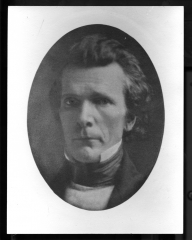that Dr. Kendrick himself had suggested they pay the fee and attend the meeting to counteract the Rochester influence.
The first important item of business was a proposed Removalist amendment to the Society’s Constitution providing that Trustees should be of three classes, the first to serve three years, the second two, and the third, one, instead of having the whole Board elected annually. When the amendment had been passed and a list of nominees presented, Removalist strategy was disclosed in that the majority of those chosen for the two-and three-year terms were friends of Rochester. This move roused the ire of the Anti-Removalists and turned the meeting into a scene of wild confusion which even a “season of prayer”
by the venerable Fathers Alfred Bennett and John Peck failed to quiet. The arbitrary ruling in election procedure by Elisha Tucker, the moderator, and his refusal to accept the votes of the new “members”
intensified the discord. After electing their slate the Removalists then voted to withdraw the names of the new “members”
and to return their money. Pandemonium again broke loose with applause from Rochester supporters and hisses from Hamilton friends.
When the resolution to release the University from its contract with the Education Society, which the Society’s Board had passed that morning to invalidate the First Compact, came up for ratification, William R. Williams was its leading advocate. In his speech he took occasion to make several harsh remarks about the local citizens, to which James W. Nye, a local attorney, replied. After protracted discussion the Removalists carried the resolution by a vote of 54 to 19. On the warm dry evening after this boisterous session some of the village boys, with parental permission, sprinkled the dusty streets with the fire engine. In sport, it was alleged, they played the hose on several dwellings. Zenas Morse, a Removalist University Trustee, former classics instructor on the faculty, and then principal of the Hamilton Academy, lived across from the Baptist Church. On reaching his house the boys, exclaiming, “we go for removal by water,”
flooded this unpopular citizen’s hallway. The prank perhaps lost some friends for Hamilton but the local interests excused it as an expression of youthful spirit.
The Society, reconvening in the University Chapel at eight o’clock the next morning, Thursday, August 16th took up the Board’s second resolution which definitely recommended removal. The Hamilton peo-





